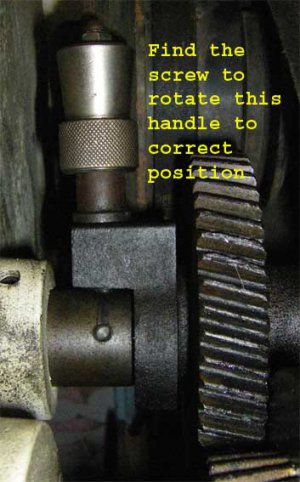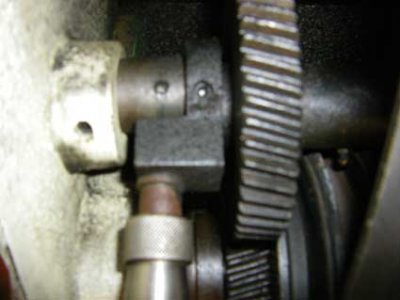What type of noise are you referring to?
BTW, that manual would be a good addition to our
Downloads section. Please feel free to upload it as it may be very useful to others.
It's a "growling" noise - and from the other post above, it sounds (no pun intended!) like they're possibly all noisy.
Would also explain why I've always thought my spindle speed was too low! Like having your 4*4 stuck in 4 low and not realizing it....
Those pictures are VERY similar to my setup. I can just pull up on the lever, and swing the back gear(s) out of the way.
There's a pin/knob on the side of the large gear right by the chuck. Has a spring under it.
But I'm kind of confused, since the spring pushes the knob (22) away from the gear(23), and I don't see a way to push it in and lock it.
Possibly it's broken off inside?
Or maybe I'm just not doing it right. I'd assume you push in, engaging the pin in a hole, then maybe give it a half turn to lock?
(as you can see - that manual really sucks when it comes to details!!!)
I can't upload the manual (yet) since I'm pretty sure I need 20 posts, and I just joined.
But don't worry... writing is a hobby... you'll be sick of hearing from me in no time flat.





